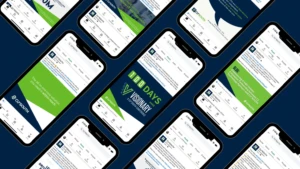I began my marketing career over 30 years ago with a simple belief: the right message could drive people to take action. I thought that if it was clever and catchy enough, success would follow.
I quickly learned there’s much more to marketing than that. Simply put, marketing isn’t just about what you say—it’s about how well you understand the people you’re saying it to.
Fast forward 33 years, and I’ve led marketing teams, built brands from the ground up, rebranded several others, and navigated more industry changes than I can count. I learned some lessons the hard way, others were pleasant surprises, but all of them have shaped the way I think about marketing today.
And without all of that valuable experience, I never would have been able to launch my own agency, which celebrates its ninth anniversary in June. I can’t believe it’s been nearly a decade of helping businesses grow, navigating economic uncertainty and adapting to shifts in marketing and technology—all while building a resilient, remote-first company.
Running a business isn’t easy, and keeping it thriving through economic downturns, a global pandemic and changing consumer behavior is no small feat. The same marketing principles I’ve championed for years have played a key role in Brand825’s success, and if I had to summarize some of the most important things I’ve learned over 30 years in this business, it would look something like this:
What Still Works: Timeless Marketing Truths
1. Without Trust, You Have Nothing
No amount of advertising, branding or digital wizardry can make up for a business that doesn’t deliver on its promises. If customers don’t trust you, your marketing will never be enough.
I’ve worked with companies that poured millions into campaigns, but because their customer experience was broken, they saw no return on their marketing investment. On the other hand, I’ve seen businesses with modest budgets thrive simply because they consistently delivered value and built real relationships with their customers.
Building a brand isn’t just about visibility—it’s about trust. And trust is something you earn, not something you can purchase.
2. Clarity Beats Cleverness
It’s not uncommon for brands to overcomplicate campaigns with witty, trendy or high-concept messaging to try to reach as many prospective buyers as possible. But, if your audience has to think too hard, they’ll move on.
People don’t have time to figure out what you do. A strong brand message isn’t about being the smartest voice in the room—it’s about being the clearest.
When in doubt, keep it simple.
3. Sales and Marketing Must Work Together
I’ve worked in environments where sales and marketing operated in silos, and I’ve worked in places where they functioned as one team. Guess which companies grew faster?
Marketing should generate demand and nurture leads. Sales should convert and deepen relationships. But when these teams aren’t aligned—when marketing hands off cold leads or sales doesn’t understand the story behind their brand—opportunities get lost.
Businesses that integrate sales and marketing have shorter sales cycles, higher conversion rates and stronger customer relationships. If you want to grow, get these teams in sync.
What Doesn’t Work Anymore: Tactics to Leave Behind
1. Mass Marketing Without Personalization
There’s an old marketing adage that our content strategist says at least once a week: “If you’re marketing to everyone, then you’re marketing to no one.”
Gone are the days when you could blast the same message to your entire audience and hope for results. Customers expect personalization—content that speaks to their specific needs, industry and challenges.
Technology has made this easier than ever, yet some brands still rely on one-size-fits-all messaging. If you’re not tailoring your outreach, you’re missing out.
2. Vanity Metrics Over Real Results
It’s easy to get caught up in metrics that look impressive but don’t actually drive business growth. If followers, likes, impressions, etc., aren’t translating into engagement, leads or revenue, then they’re just numbers on a screen.
Chase impact, not numbers. If you’re interested in metrics that matter when it comes to business growth, check this out.
3. Chasing Every Trend Without Strategy
As humans, we love new, shiny things. It’s in our nature. When there’s a new platform, viral trend, tech hack, buzzword, etc., we tend to jump on it hoping it’ll be the magic bullet. The problem? A magic bullet without a strategy is nothing more than a paperweight.
Before you hop on an uncharted social network, launch an AI-powered chatbot or pivot your messaging to match the latest trend, ask yourself: Does this align with our goals? Does this serve our audience? Can we support this operationally? If the answer is no, skip it.
How Marketing Continues to Evolve
1. AI and Automation Are Here, But Human Creativity Still Wins
AI has a profound impact on just about everything right now, and marketing is no exception. But it’s important to remember that AI is not a replacement for human insight. It can analyze data, optimize campaigns and even generate content, but AI can’t build relationships, tell authentic stories or understand nuance.
The brands that balance AI-driven efficiency with human creativity will be the ones that are the most successful.
2. Customers Expect More Than Just a Product—They Want an Experience
With so many options vying for consumers’ attention, buying decisions aren’t just about price or features. People want a seamless, engaging experience—whether that’s through a frictionless digital journey, a memorable brand interaction or a personalized touchpoint.
Brands that focus on customer experience, not just selling, will build stronger loyalty and stand out from the competition.
3. Marketing May Drive People Crazy, But It Also Drives Business
For years, marketing was seen as a cost center—something separate from business strategy. Too often, marketing is the first line item cut from a budget when an organization is struggling financially.
It’s time to put some respect on marketing’s name and treat it like the revenue driver that it is. It fuels sales, builds customer relationships and shapes the type of brand perception that drives long-term growth. Businesses that treat marketing as an investment, not an expense, will see the biggest returns.
If the last nine years of running Brand825 have taught me anything, it’s that the best businesses don’t just adapt to change—they embrace it. And the best marketing doesn’t just sell—it builds something bigger.
Brand825 has survived and thrived for nine years because we’ve built a business on these principles—and we’re just getting started. If you want a partner that can help you build a marketing strategy that drives real business growth, then let’s talk.
Kedran Brush, Brand825’s Co-Founder and CEO, has more than 28 years of marketing leadership experience at the SVP and CMO levels, including revenue growth, customer satisfaction, brand awareness, etc. When she’s not helping brands be their best, Kedran can be found relaxing on the lake, at Tennessee Titans games and trying to stop her dog from chasing the elusive neighborhood squirrel.











